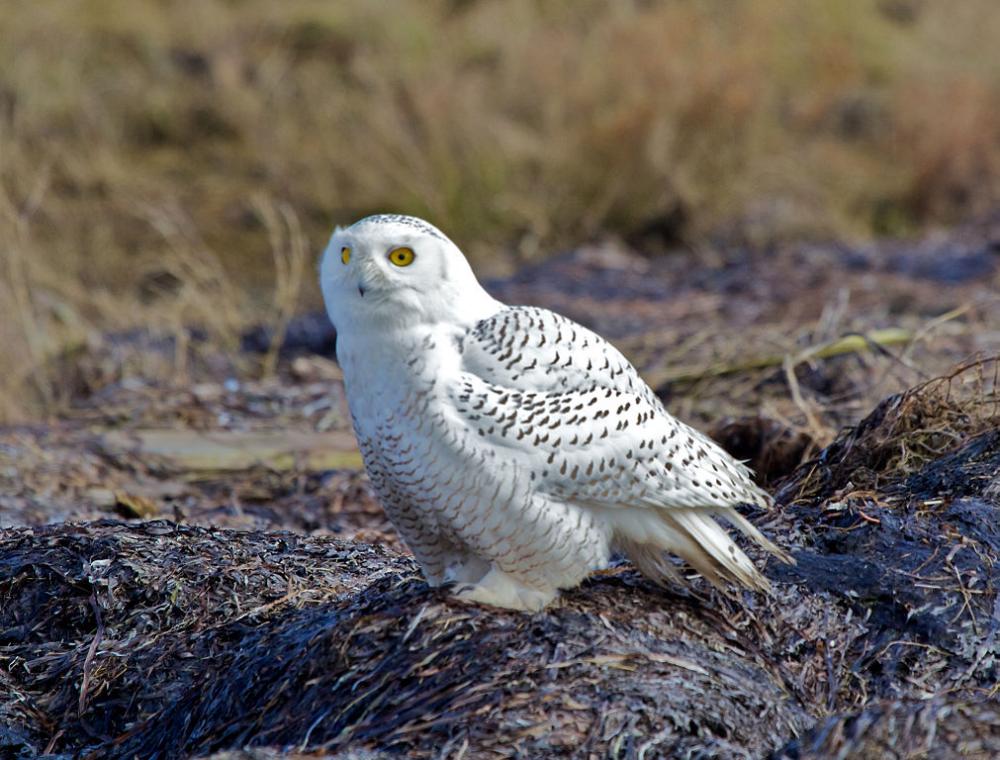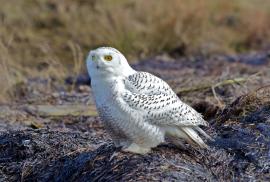Guide to Boreal Birds
Overview
This great white owl is a beautiful sight as it perches upright on a fence post or flies over a marsh. Strictly a bird of open country, it is practically never seen in a tree; it sits on the ground, a rooftop, or other exposed resting place. In the Far North where it breeds, it depends largely on lemmings for food. The size of the lemming population periodically changes (due to population explosions and subsequent epidemics), and when lemming numbers decrease the owls must migrate southward to avoid starvation. In southern latitudes, the owls prey on rabbits, waterfowl, and other game, or on dead fish on ocean beaches. They prey on Norway rats in large refuse dumps. The Snowy Owl is also the official bird of Quebec.
Description
24" (61 cm). W. 4' 7" (1.4 m). A big, round-headed owl, ranging in color from pure white to white with dark spotting or barring. Female is larger and more heavily marked than male.
Voice
Usually silent; hoarse croak and shrill whistle on breeding grounds.
Nesting
5-8 white eggs with a lining of feathers, mosses, and lichens placed on open tundra.
Habitat
Open country: tundra, dunes, marshes, fields, plains, and airports in winter.
Range/Migration
Breeds in northern Alaska and in northernmost Canada. Winters south throughout Canada into northern United States, irregularly farther. Also in Eurasia.



